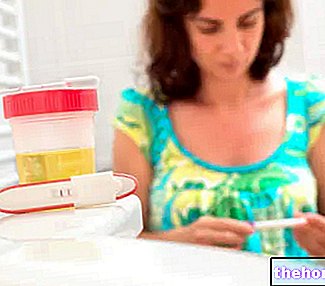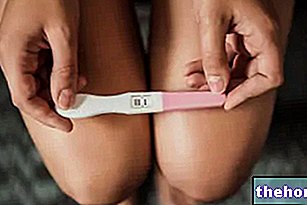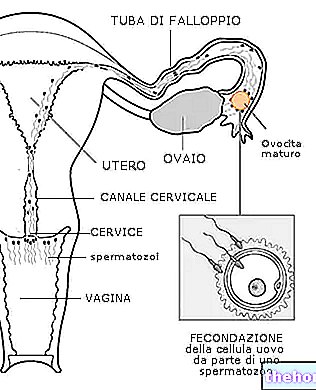Emergency contraception
In the long list of hormonal contraceptive methods, the morning after pill also stands out. A specific article is dedicated to this method in order not to create confusion and doubts.
Let's start by saying that the morning-after pill should NOT be considered a usual method of contraception. Rather, the morning-after pill is a birth control practice. following to sexual intercourse potentially at risk of pregnancy.
- The morning after pill cannot and must not "be used whenever pregnancy is suspected
Morning after pill
The morning-after pill is indicated in the following circumstances:
- Forgetting the estrogen-progestogen pill after one or more complete sexual intercourse
- Failure of a barrier method of contraception (e.g. condom breakage)
- Detachment of the transdermal patch or birth control ring
- Expulsion of the contraceptive IUD
- Error in calculating the days of potential infertility (failure of a natural "contraceptive" method)
- Rape / sexual abuse
The main features of this emergency contraceptive method are listed below.
Morning after pill (NorLevo ® or Levonelle ®)
- The morning after pill is made up of levonorgestrel only (progestin hormone)
- This emergency contraceptive method works by stopping ovulation (if this has not yet occurred)
- The emergency contraceptive method hinders the passage of spermatozoa towards the uterus and tubes, while altering their functionality
- The post-coital pill also acts by preventing the fertilization of an egg that has already been released (the encounter between sperm and egg cell is denied)
- Very few contraindications to use
- Relatively modest side effects
- It is NOT contraindicated for smokers, hypertensive, diabetic
- The emergency contraceptive method can also be taken by women suffering from endometriosis, uterine fibroids, hypercholesterolemia, migraine, thyroid dysfunction, angina pectoris and other cardiovascular diseases.
- There were no acute toxic effects following the administration of multiple pills the next day
- This emergency contraceptive method is not an abortion practice because it has no effect on the implantation of the embryo.
- If the zygote has already been implanted, this emergency contraceptive method does not hinder the correct development of the embryo in any way.
- It does not protect against sexually transmitted diseases
- The morning after pill should NOT be considered a usual method of contraception
- Contraindicated in case of confirmed pregnancy
- Practices its contraceptive activity if taken no later than 72 hours after a potentially risky sexual intercourse
- This "emergency" contraceptive pill should not be taken together with anticonvulsant, antibiotic or antiepileptic drugs
- Possible side effects in subsequent menstrual cycles: hypermenorrhea, polymenorrhea, spotting, leucorrhoea
- Abuse of the emergency contraceptive method can induce liver toxicity
- The emergency contraceptive method requires a non-repeatable medical prescription
- Contraceptive efficacy of the contraceptive method 12 hours after sexual intercourse at risk: 99.5%
- Contraceptive efficacy of the contraceptive method after 24 hours from sexual intercourse at risk: 85%
- Contraceptive efficacy of the contraceptive method after 72 hours from sexual intercourse at risk: 58%
Copper IUD spiral
The COPPER IUD SPIRAL is also included in the same category of emergency contraceptive methods. This contraceptive practice - unlike the morning-after pill - can also be chosen by women as the first-choice method of contraception. The IUD spiral assumes the connotation of " "emergency" contraceptive when applied in utero no later than 5-7 days after intercourse potentially at risk of pregnancy.
Copper IUD spiral
- The IUD Copper Coil is a small plastic device surrounded by a thin coiled copper wire. The IUD must be implanted in the woman's uterus by a gynecologist
- Copper exerts a "spermicidal action: therefore, at the level of the uterus it releases its ions, preventing the fertilization of the egg and hindering the motility and survival of the spermatozoa.
- Once inserted into the uterus, the contraceptive action of the method is ensured for 3-5 years. The copper IUD can remain in place as a continuation of contraception.
- It interferes with the motility of spermatozoa
- It prevents the implantation of the egg (possibly already fertilized) in the endometrium
- Reduced risk of ectopic pregnancy (after IUD removal)
- The contraceptive device must be inserted into the woman's uterus by the doctor after a gynecological examination
- It does not protect against venereal diseases
- Contraindicated for women predisposed to genital infections. Pathogens could lurk near the IUD, and cause damage
- It is not suitable for women who have just given birth: in this case, the contraceptive method is more likely to be expelled
- It is not indicated for women with ovarian and cervical cancer
- Not suitable for women with pelvic inflammatory disease
- It can create allergic reactions to copper. Contraindicated for women who are also allergic to nickel
- More abundant menstrual cycles after IUD insertion
- The insertion of the IUD within 5 days of a risky intercourse is able to avoid the onset of 99% of pregnancies
Yuzpe method
There is an "additional emergency contraceptive practice" which is called Yuzpe method. It is a particular morning after pill consisting of a combination of estrogen - in high doses (100 mcg of ethinyl estradiol) - and progestins (levonorgestrel: 0.5 mg or norgestrel: 1mg). The aforementioned pharmacological preparation should be taken in two doses, at an interval of 12 hours one from the other. To date, given the important side effects and low therapeutic efficacy, the "Yuzpe" pill is considered an outdated and no longer used emergency contraceptive method.
Other articles on "Contraceptives D" Urgency - Morning After Pill and Spiral "
- Hormonal contraceptives
- Contraceptives - Types of Contraceptives
- Mechanical Contraceptives - Barrier Methods
- Implantable contraceptives: IUD coil and sticks
- Chemical Contraceptives or Spermicides
- Natural Contraception




























